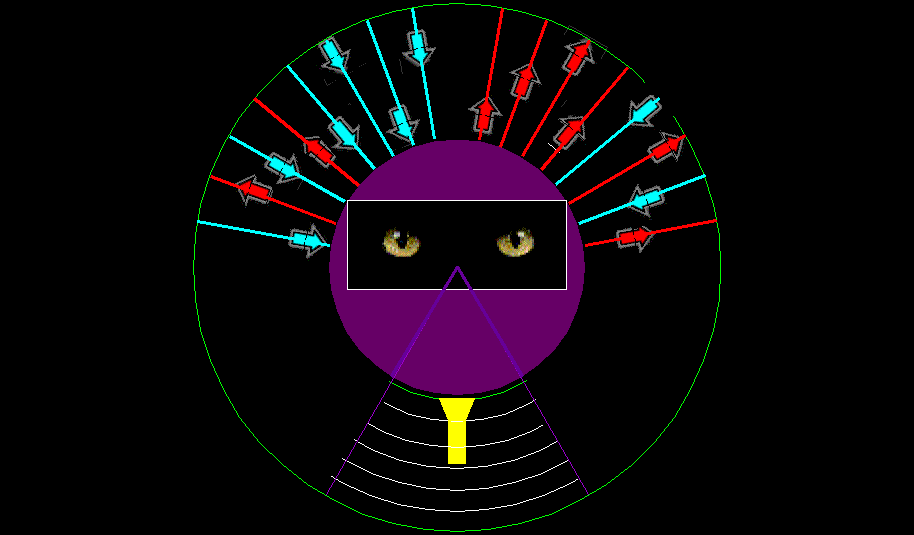|
|
operations of HIGH POWER BROADCAST TRANSMITTER TUBES |
|
|
8984 Tube |

Pentode Power Tube Electrons pass from the cathode (in red) through the Grid through the Screen and strike the Plate. |
The tube has several parts.
|
8977 Tube Tube busted in two parts... |
|
|
|
 RF
RF
|
Other |
| V |
|---|
|
V=Voltage |
| I |
|---|
|
I=AMPS |
|
|
 Fortunately, in proper operation, the electrons are slowed (in fields) and thereby impart some of their energy to tuned circuits.
As electrons approach the plate, they are slowed BEFORE impact.
Fortunately, in proper operation, the electrons are slowed (in fields) and thereby impart some of their energy to tuned circuits.
As electrons approach the plate, they are slowed BEFORE impact.  When the transmitter was going to be idle during the night, my control system would reduce the filament voltages a small amount:
about a volt.
Actually, a volt is a huge amount on a broadcast transmitter tube.
A volt can spell disaster for a tube due to either "cathode stripping" or "emitter poisoning".
And only a good control system could attentively prevent (actually delay)
a transmitter from going back into a radiation mode with such a dangerously low voltage.
When the transmitter was going to be idle during the night, my control system would reduce the filament voltages a small amount:
about a volt.
Actually, a volt is a huge amount on a broadcast transmitter tube.
A volt can spell disaster for a tube due to either "cathode stripping" or "emitter poisoning".
And only a good control system could attentively prevent (actually delay)
a transmitter from going back into a radiation mode with such a dangerously low voltage.OPERATION


|
Health concerns |

|
